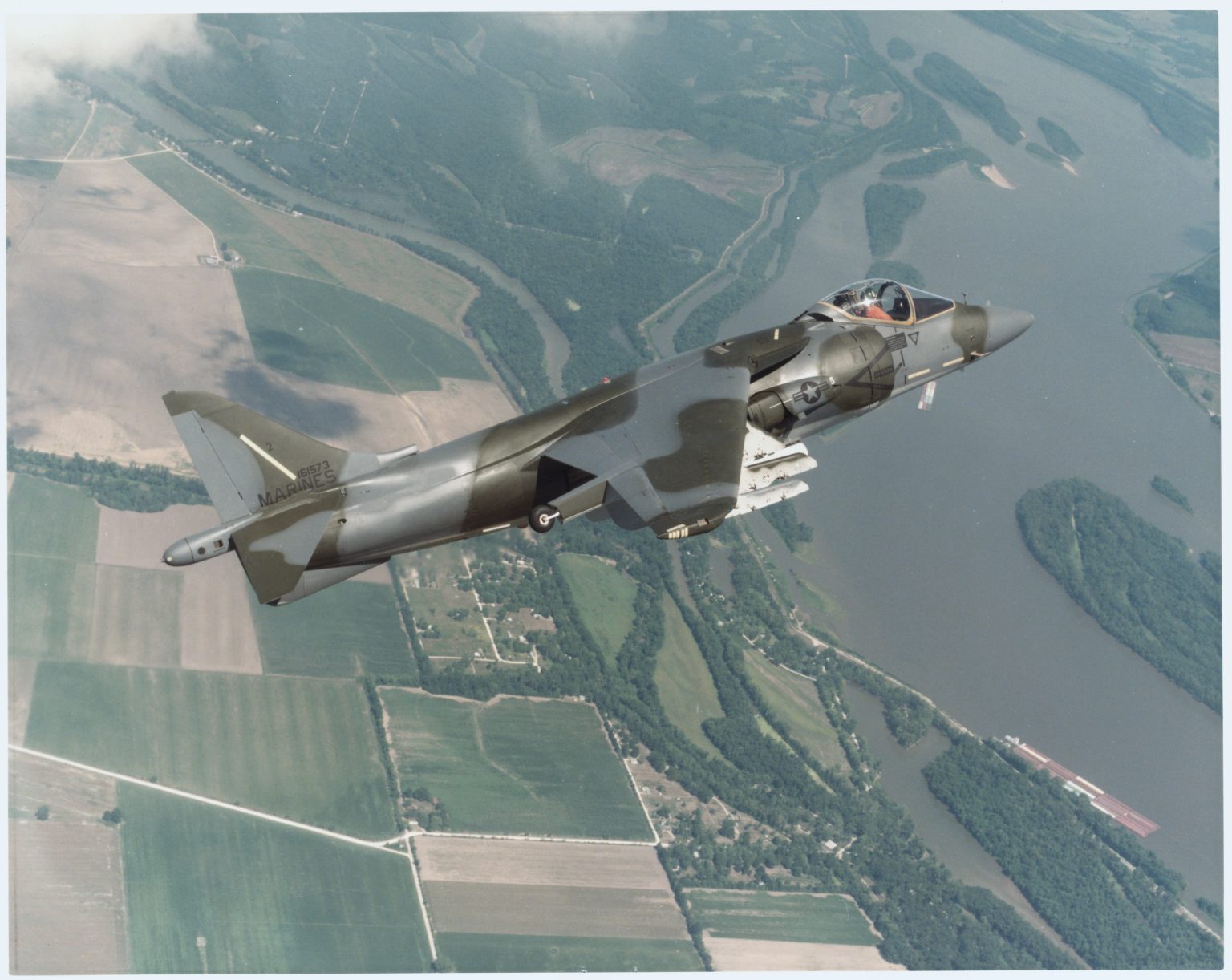The Harrier Jump Jet, developed in the United Kingdom, made its first flight on August 31, 1966. Known for its vertical and short take-off and landing (V/STOL) capabilities, the aircraft was highly innovative and helped solve operational problems for military planners. The plane’s ability to hover like a helicopter allowed it to operate from various locations, making it difficult to locate and destroy. A modern version, the Boeing AV-8B Harrier II, is currently used by the United States Marine Corps for various missions, including attacking and destroying targets, providing reconnaissance, and engaging in air-to-air defense.
The Hawker Harrier GR.1, the first RAF Squadron to be equipped with the Harrier, was received by RAF No.1 Squadron in 1969, marking the beginning of over four decades of RAF service. During the Falklands War in 1982, the carrier-based version, the Sea Harrier, gained attention for shooting down 20 Argentinian fighters without any losses on the British side. The Harrier’s success in combat further solidified its reputation as an effective warplane. The aircraft was later produced by British Aerospace in partnership with McDonnell Douglas, which merged with Boeing in 1997.
Art Nalls, a retired Marine Corps test pilot, purchased a British Sea Harrier in 2006 and became the first known civilian to fly the warplane. Nalls considered the Harrier his favorite among the 75 different types of airplanes he had flown throughout his career, which included exciting models like the F-18 and F-16. His unique experience flying the Sea Harrier showcased the aircraft’s appeal and versatility, even in civilian hands. The Harrier’s reputation as a remarkable aircraft persisted over the years, with its impact and significance remaining evident in the aviation industry.
The AV-8B Harrier II, currently used by the U.S. military, is the only short takeoff, vertical landing jet aircraft in the inventory. Its diverse capabilities enable it to handle multiple missions, such as attacking targets, providing air support, and engaging in air-to-air defense. The RAF’s success with the Sea Harrier during the Falklands War highlighted the aircraft’s combat effectiveness and solidified its reputation as a formidable warplane. The Harrier’s ability to adapt to different environments and execute missions with precision made it a valuable asset for military forces around the world.
Within a year of its first flight in 1966, the RAF ordered 60 Harrier aircraft into production, underscoring the aircraft’s immediate appeal and demand. The Harrier’s unique design and features, such as its V/STOL capabilities, set it apart from conventional warplanes and allowed for increased operational flexibility. The partnership between British Aerospace and McDonnell Douglas, later acquired by Boeing, further extended the Harrier’s production and development, ensuring its continued relevance in modern aviation. The Harrier’s legacy as an innovative and highly capable warplane endures, with its influence and impact remaining significant in the aviation industry.


